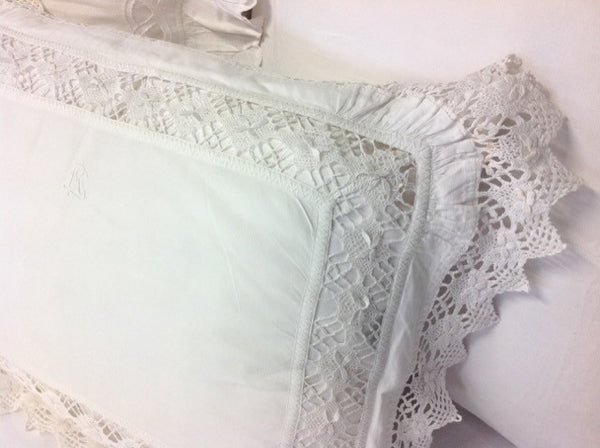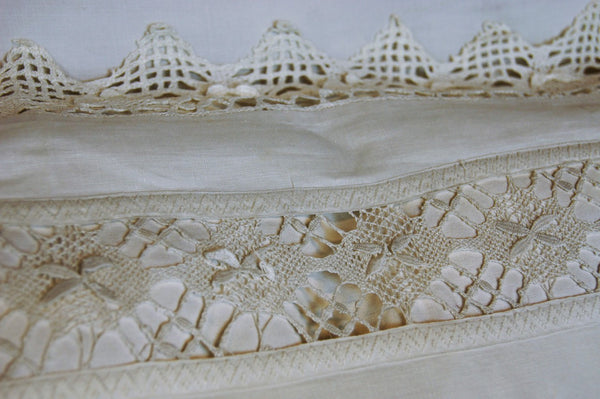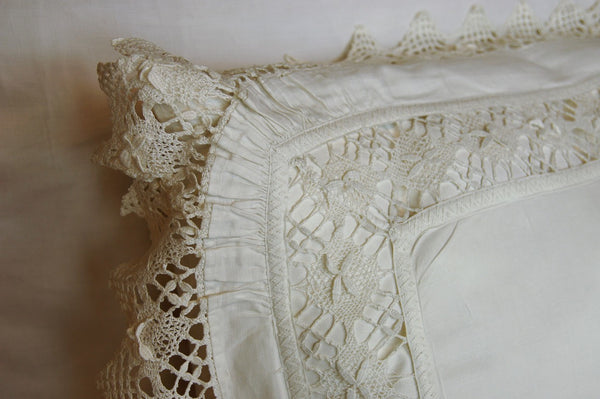This 15" x 21" antique white linen sham is ornamented with crochet inserts and lace edges; it is one in Pandora de Balthazar’s vast collection of antique and vintage textiles, one of the largest collections in the world. The filler is not included so we recommend you choose our designer overstuffed 17"x24" pillow insert.
Antique White Linen Sham with Crochet Inserts
There is nothing like crisp, white bedding to bring a feeling of freshness to a bedroom. If you are a romantic at heart, as our founder is, you'll see how she fell so completely in love with so many of these antiques she has collected over the years. As with this linen sham, she has sourced the vintage and antique textiles from around the world, offering them online and at antiques fairs and shows throughout the US.
See Our Antique Textiles in Person
This is but one of many luxurious one-of-a-kind antiques we have in our Pensacola atelier, as we have row upon row of textiles that include everything from antique French heirloom linens and primitive Austro-Hungarian Empire textiles to Art Deco and Bohemian specimens—at last count two million one-of-a-kind linens of the finest quality.
If you see a beautiful specimen on this site that you would like to see in person and you cannot visit us but you are a regular at either Round Top or the High Point Market, we will happily bring it to one of these shows so you can see for yourself how remarkable it is. See our Calendar of Events page for fair dates and let us know if we can bring our sumptuousness to you.
The Cachet of Crochet
Though the advent of many forms of handwork can be set in time thanks to archeological finds, visual representations in books and written sources in scholarly papers, no one seems to know when crochet came into being. The name hails from croc, or croche, the Middle French word for hook, so it’s a given the French call it crochet. But so do the Belgians, the Italians and Spanish-speaking people, as do we Americans. The artform is known as haken in Holland, haekling in Denmark, hekling in Norway and virkning in Sweden. Scholars believe that crochet was likely invented in the Chinese needlework communities, a very ancient form of embroidery known in Turkey, India, Persia and North Africa.
It didn’t reach Europe until the 1700s and was referred to as "tambouring," from the French "tambour" or drum. This is because with this technique during this era of handwork, a background fabric is stretched taut on a frame. By the end of the 18th century, tambour evolved into "crochet in the air," which the French deemed so because the background fabric was discarded and the stitch worked on its own. The handwork has continued to evolve since then and has been a vibrant pastime in many cultures since its inception all those centuries ago.






